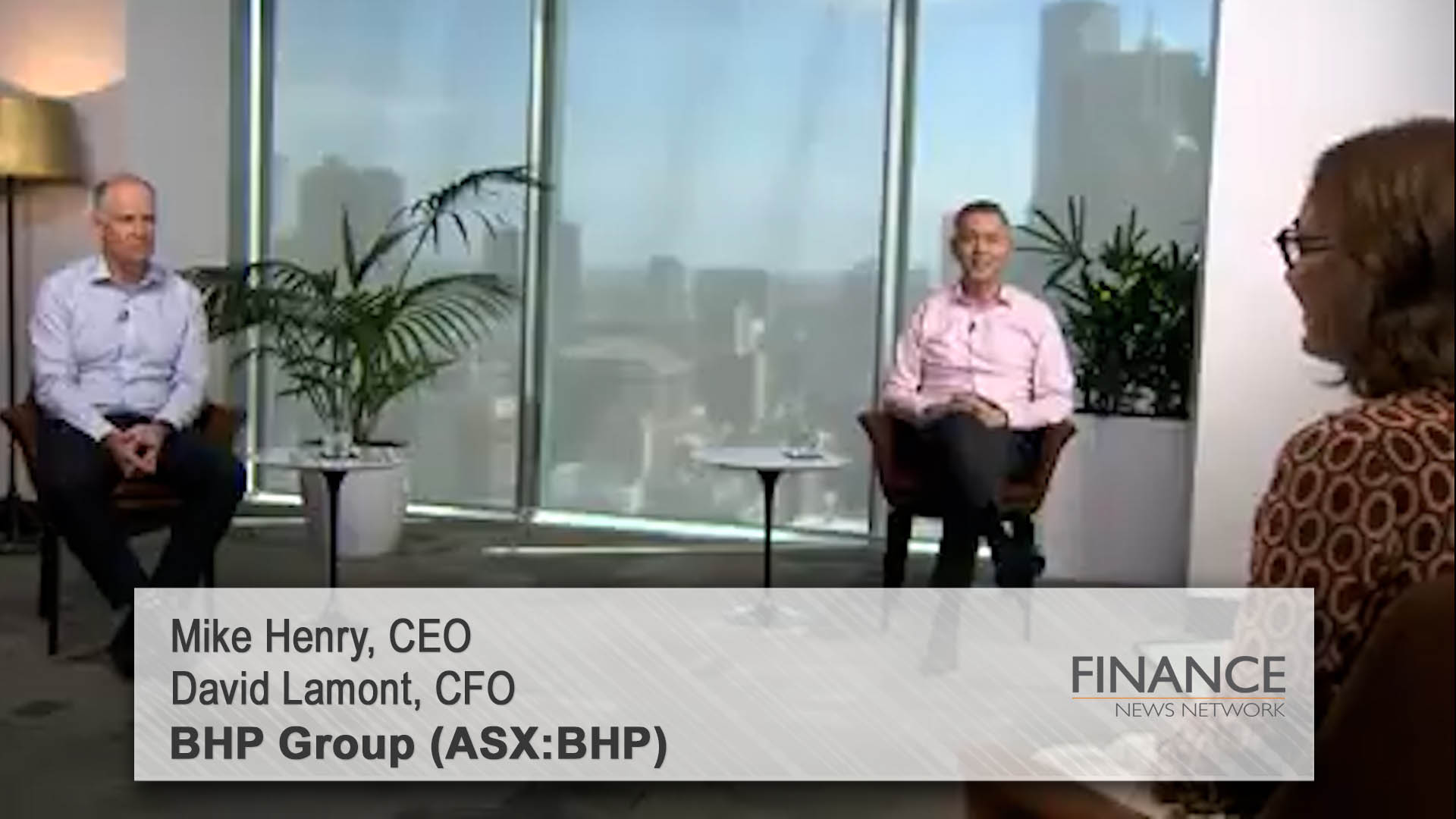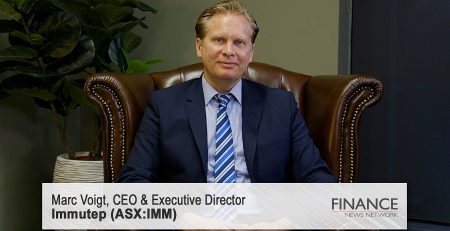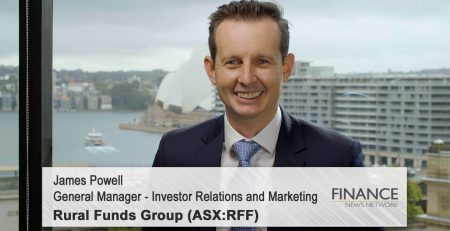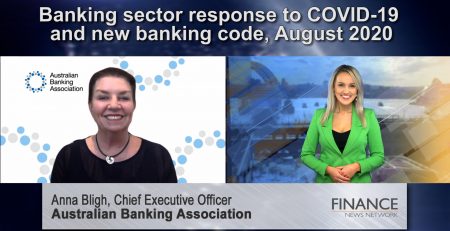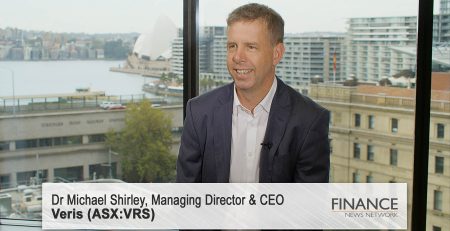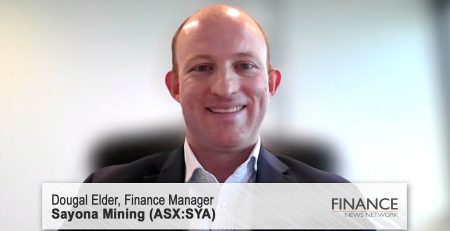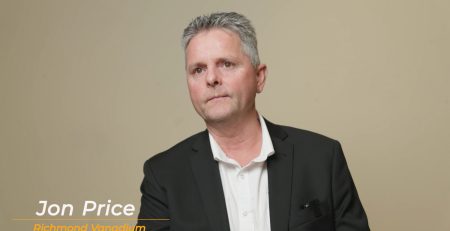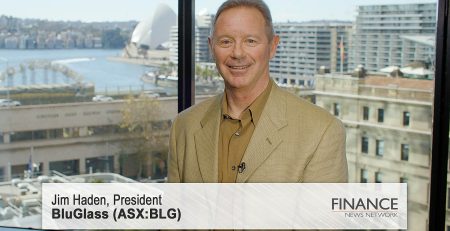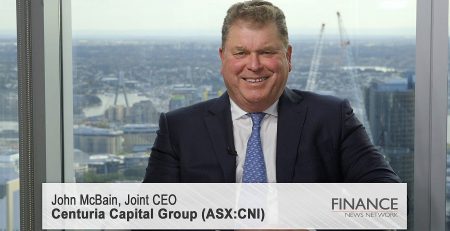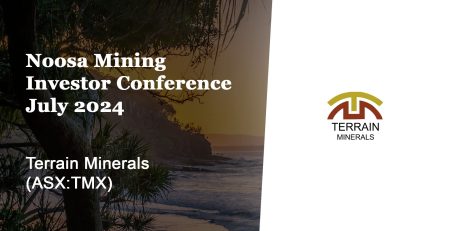BHP Shareholder Q&A Session 24
BHP Group Limited (ASX:BHP) CEO Mike Henry and CFO David Lamont provide a shareholder update with Gabrielle Notley, Head of Corporate Communications.
Gabrielle Notley: Welcome to BHP’s online information session for shareholders. I’m Gab Notley and I’m joined here today by Mike Henry, our Chief Executive Officer and David Lamont, our Chief Financial Officer. And very excitingly, we’re actually back in the Melbourne office here; it’s been a while since we’ve been here.
In the past year, a fair bit has happened at BHP. We made some big announcements last year and just recently we’ve announced our half-year results and interim dividend, so we’ve got lots to talk about today. Shareholders have sent in some great questions and they’re all keen to hear about some of the announcements that Mike and David have made and the numbers and get a feel for where the Company is going. I’ll do my best to put as many of your questions to Mike and David in the time we’ve got this morning.
Mike, I might start with you. Could you give us an idea about the half year results and what you think are some of the highlights of BHP’s performance?
Mike Henry: Sure, Gab. So it was a solid half. Operationally things were going quite well, so reliable delivery of operational performance. But the thing we all have to be proudest of is that we hit our three-year milestone in terms of being fatality free at BHP, and given the challenges that we’re facing by way of COVID, wet weather in Queensland and so on, the fact that the teams have been able to deliver very safe performance has been something that we’re all just so happy about. You couple that reliable operational delivery with very strong markets for any of our commodities and that’s what’s allowed us to deliver this record set of earnings for the first half and record first half dividend.
Now it wasn’t just about operations in the first half, because we’ve also managed to progress some of the big strategic moves that we need to make to create the BHP of the future. And I include within that the decision to proceed with the investment in Jansen Stage 1 which opens up a new front for growth in potash for BHP, and potash is a commodity that’s going to help more efficient agricultural production going forward, more efficient and more sustainable farming.
In addition to that, we’ve of course announced the merger of our petroleum business with Woodside which is going to create a bigger global top 10 independent energy company better able to navigate the energy transition. We’ve consolidated or taken a number of steps to consolidate our coal portfolio, and of course we’ve successfully unified BHP, or announced unification in last half and have recently completed unification of BHP, which gives us a simpler structure and a better platform from which to continue to grow the Company over the long term.
Of course I can’t forget to mention our Climate Transition Action Plan as well, which we brought forward during the half and which received very strong support from our shareholders. And in that plan, we lay out how we think about the climate action, our decarbonisation commitments and so on. So it was a very big half and the shareholders are seeing the benefit of that strong underlying operational performance and strong markets.
Gabrielle Notley: It’s a lot happening, Mike. You mentioned the dividend. David, I might actually turn to you now, one of our first questions is actually about the dividend and that’s obviously very important to our shareholders. I have a question here from Peter who says, as a self-funded retiree and shareholder, I’m vitally interested in the Board’s forward strategy on dividends. And we also have another question around share buybacks from Anthony. I wondered if you could respond on those topics.
David Lamont: Yes, certainly and appreciate the question. Let me start by saying with the dividend that we announced, we’ve now returned US$22 billion to shareholders in the last 18 months. So a substantial amount of money going back to shareholders, which we see is critical alongside our overall priorities associated with the Capital Allocation Framework. So that was put back in place in 2016 and as part of that process, we guarantee that we’ll deliver 50% payout to shareholders as a dividend.
Over and above that 50%, we then look at what’s the best way to evaluate and return money back to shareholders. So every six months the Board, in conjunction with management, look at how much cash should we return to shareholders and then for that amount over the 50%, we consider whether that’s further cash dividend or whether or not it is actually better as a buyback. So there’s a process that we step our way through, applying the Capital Allocation Framework, understanding that it’s not a discreet decision – we need to consider all of our global shareholders and the different bases that shareholders look at that.
It is also important to note that with the shareholders and with the dividend that we’ve paid, it’s a fully franked dividend, and so there’s additional franking benefit that goes to the Australian shareholders as part of that distribution. So this half, when we assessed all of that, we felt it was better to top up through a cash dividend than it was actually looking at a buyback. As I said, it’s a six-monthly review process that we do with the Board and we’ll continue to look at the best way to return money back to shareholders.
Gabrielle Notley: And you’ll update shareholders each six months as part of the results announcements?
David Lamont: Yes, certainly and for this half, as we said, US$1.50 per share will be paid for shareholders on 28 March. Associated with that, if you take today’s exchange rates, that’ll be about £1.10 for our UK shareholders and A$2.10 for our Australian shareholders as a dividend on 28 March.
Gabrielle Notley: Mike, can I turn to a different area? We’ve had some questions from shareholders including Wendy and Nazim around the impact of unification. They’ve also asked what it means for them and in the context of taking unification and the new net debt targets, is that a sign of more mergers and acquisitions for BHP?
Mike Henry: Okay, thanks Gab. Well there’s a bit in that question and I’ll probably ask David to speak to net debt, but I’ll talk just firstly about what unification means and what shareholders should be reading into it in terms of the growth and M&A outlook. What does unification mean? I can say what it doesn’t mean. There’s no change to the BHP business in terms of the underlying assets, the Board, the management team.
This great set of results that we’ve just delivered, everything that underpins that remains the same going forward, so same strong set of underlying assets and portfolio, same management team, same strategy. But what it will give us is a more efficient business, so a simplified business, and it will make us more agile and able to move more quickly and capitalise on opportunities over time as we do seek to continue to reshape the portfolio and grow the BHP business for good value and returns.
Now what does it mean in terms of mergers and acquisitions? We have a clear intent to continue to grow value for shareholders. Now M&A is but one lever in that regard, so there’s a lot of other things that we do. First focus, of course, has to be delivering even more value from the assets that we already have. We do that through a strong focus on continuous improvement in productivity.
At the same time, we want to look at how we can bring innovation and technology to bear on liberating more of these great resources that we already have more quickly and for higher returns. And we’re doing other – we’ve increased our focus on exploration and early-stage entry and so on. But if the right opportunities arise on the M&A front for the right value, at the right time, then the unified structure will better enable us to pursue those.
David, I might just ask if you can comment on net debt.
David Lamont: Yes, certainly Mike. What we did announce is a new range from US$5 billion through to US$15 billion in exchange for what was previously the US$12 billion to US$17 billion. So there’s two aspects to that. One, we’ve widened the range and two, we reduced from US$17 billion down to US$15 billion. Now the reduction is largely a reflection of the petroleum business moving to the merger with Woodside and that coming out of the portfolio.
The widening of the range is really as much as anything a reflection of how we’re currently producing. I mentioned earlier the dividend that we’re looking to pay out of US$1.50 per share. That will be some US$7.6 billion. So clearly, if we only had a US$5 billion range, we would be outside of that paying out this round of dividends, so we’ve widened the range.
Importantly, though, we’re very much focused on maintaining a resilient balance sheet. That’s what drives the overall net debt range and we want to make sure that we’re resilient in that sense because we are in a market that has volatility alongside the overall cashflow in the business and we reflect that in our overall net debt range.
Gabrielle Notley: Thanks David. You mentioned the petroleum merger with Woodside, we’ve got quite a few questions from shareholders who are starting to think about that and what that means for them. I might just read a few of them out if that’s all right and ask you to address them. We’ve had questions from Greg, Michael and Douglas. They want to know when will the merger be complete, how many shares will BHP shareholders receive and when they receive them and what are the tax implications for shareholders of the merger?
Another couple, Rob asks if there is a cut-off date for eligibility for Woodside shareholders or if shareholders can keep buying BHP shares up until the merger and still receive the Woodside shares. And finally, one from Bevan who also has a technical question, he says, with the Woodside shares being issued as a franked dividend, will this be in FY22 or FY23? So a lot of technical questions there, maybe I could ask you to address them.
David Lamont: Yes, well let me see if we can unpack all of those questions as part of this answer. But let me start by actually saying what was very pleasing in the six months was the performance of the underlying petroleum business. It continued to meet our expectations and guidance that we’ve given and equally you would have seen just recently Woodside came out with their results, which were also strong. So the fundamental basis of the merged entity holds up. We do think the two companies coming together and merging will create a more robust business to help the world’s energy transition that’ll occur. And it will create one of the top 10 independent energy companies in the world.
Now in relation to the overall performance and timing, that’s very much driven by the Woodside Annual General Meeting that they need to have and the shareholder vote. So as part of that coordination, which Woodside have given some indication that they’re looking to have that certainly in the second quarter of this calendar year, that will establish a record date. So up until that date, BHP shareholders will be entitled to Woodside shares upon completion up to that record date. So I can’t give you a specific date at this stage because it very much is driven by the Woodside timing as such. But again, what we do see as part of that is on completion, that the expectation is in that second quarter of this calendar year.
Gabrielle Notley: Mike, I might now ask you to address some questions that we’ve had on decarbonisation and emissions reduction. Hannah in particular asks how BHP aims to ensure it will continue to be profitable in a carbon-constrained global economy and also what is BHP doing to reduce its own emissions?
Mike Henry: Great question and a number of the things that, between David and I, we’ve spoken about today are around the portfolio and what we’re doing to reshape the portfolio. I also mentioned the Climate Transition Action Plan. So on portfolio and the question is how are we going to ensure that we remain profitable through the energy transition or through decarbonisation, of course we want to make sure that we’re exposed to those commodities that have the greatest upside as the world decarbonises.
We released a bit of analysis, I think it was last year possibly, maybe even the year prior, where we set out how we see different commodities performing in a faster decarbonising world. One of the insights that came out of that was that pretty much all of the commodities that will remain in the BHP portfolio after the series of transactions that we currently have underway, will have upside in a faster decarbonising world.
So a 1.5-degree Celsius world, where the global temperature increase is limited to 1.5 degree Celsius, that world and the faster decarbonisation that accompanies that will be of benefit to copper, nickel, potash and even higher-quality iron ore and higher-quality hard coking coal, as the steel industry seeks to decarbonise, we’ll see some upside.1. So we’re ensuring that we have the right portfolio to benefit in the decarbonising world.
Now of course in addition to that, we have to decarbonise our own operations and we have to ensure that others in the supply chain are able to decarbonise theirs and we have a role to play in that. So what we’ve been doing is we’ve committed in our Climate Transition Action Plan to a 30% further reduction in our own Scope 1 and Scope 2 emissions by FY2030 and that’s on the path to being net zero by 2050. We’ve set out a goal of seeing net zero for the whole of our value chains, that includes downstream, also by 20502 and we’re working with customers, in partnership with customers, to help them achieve that ambition.
So we’ve entered into partnerships with customers who comprise about 12% of the world’s steel production, for example, to support their efforts to decarbonise. We’ve entered into a number of innovative shipping arrangements where we’re stimulating new technologies to be brought to bear to decarbonise ocean freight and shipping. And in our own operations, period on period, so relative to the same period year prior, in the last half we reduced Scope 1 and Scope 2 emissions by 16%, so well on track to achieving our 30% by FY2030.
And that’s by a very large shift, that first step down is through a very large shift to renewable energy to power our operations, particularly in Chile, but we’ve recently been pursuing that here in Australia as well. So Gab, we’re going to ensure that we’ve got the right portfolio, that benefits through decarbonisation where we see ourselves as playing a role in meeting the world’s needs for the commodities that are needed for decarbonisation and at the same time, we’re ensuring that our own operations get – that we’re able to decarbonise our own operations as well.
Gabrielle Notley: And you put this to shareholders recently, Mike?
Mike Henry: We did. So we took the Climate Transition Action Plan to shareholders late last calendar year and this plan received very strong support. Of course we want to continue to build upon that, but strong support from shareholders for the Climate Transition Action Plan and all of the elements that I just spoke to.
Gabrielle Notley: Thank you. I might change topics now and this may be a question for you, David. This is from Matthew. He asks, higher iron ore prices have made a significant contribution to the results again in this half, but how sustainable do you think this is?
David Lamont: So great question Matthew and let me also put this in a broader context. What we did see is in metallurgical and thermal coal prices were triple what they were in the prior corresponding period. For nickel and for copper, we saw that they were 30% up on prior corresponding period and iron ore, referencing your question, was up 9% versus the prior year.
So it’s important though, with those pricing dynamics, that we manage what we can control and we maximise the return to shareholders of those increases in prices and that’s really about focusing on our operations, being more resilient in how we operate and continue to have a very strong cost focus. By doing those things, we’re able to actually ensure that we deliver the most to shareholders regardless of where the prices are moving to in comparison to our peers.
So specifically in the Pilbara and our Western Australian iron ore operation, we are the lowest-cost producer, and our focus is continuing to actually be there as the lowest-cost producer and maximising the return that we can get out of the iron ore. Now, we're not in the business of forecasting prices; we'll leave those to others. We're in a process of ensuring that we're maximising the return to shareholders given the market conditions.
Gabrielle Notley: Just on that, we've had some questions around COVID and the impacts of COVID on the business. James and Patrick have asked questions around this. Mike, do you expect the pandemic to further disrupt operations and costs at any BHP site, and in particular in WA, what's been the impact of the border closures there on operations.
Mike Henry: Look, I might actually ask David to speak to some of the impacts that we've seen on operations, and I'll talk to the WA border-specific question, but David, maybe just a bit on operations.
David Lamont: Yes. Thanks, Mike. In relation to the impact on operations, there's two main areas that we're seeing. One is around labour and labour shortages, and the other ones are around the supply chain aspect. Certainly, when you look at the labour side, pretty heavy early on in the COVID impact in Chile, as an example. More recently, it's been more on the east coast of Australia where we've seen large impacts to availability of labour.
Equally, in Western Australia there has been some skill shortages that we've seen, in train drivers as an example. What I would say is it's a great credit to our operations that we've been able to continue to operate and deliver the results given those restrictions. From that side of things, we've taken a lot of learnings from around the globe and applied them as things have unfolded here more recently in Australia.
The other thing is the supply chain, and clearly what that has meant is that we've needed to think about inventory levels that we've had. We've needed to through our procurement team work with our suppliers proactively in trying to address issues as they arise, and we're continuing to focus on that. Now, that's an area that we would say we are still going to see most of that pressure still come through this calendar year and potentially into next financial year as well. They're not something that we see that is resolvable in the short term, but we continue to be very diligent in what we can manage as part of that process.
Gabrielle Notley: And Mike, on the border?
Mike Henry: Gab, I will talk about the border but just before I get to that, if just build upon what David said around operations. We also have to keep in mind that COVID has created disruption and hardship for many of the others who depend on, or who have business with BHP, or their communities depend on BHP as well. So, we have tried to lean in over the past couple of years to support them. We've shortened payment terms for our small local suppliers and Indigenous suppliers. We've worked with local communities to support some of the programs that they have as well.
Now, David did reference skill shortages and I think David mentioned specifically train drivers in Western Australia. They're one example. We've also seen the same in some other skills there, and that's being driven by a strong economy but also by the immobility of labour across Australia. With the border closure of course it's been hard to bring skills in from elsewhere in Australia or from overseas.
Now, I would say that whilst a lot of operational performance has been led and driven through our teams and the learnings they've taken from elsewhere, we have had the support of governments. I think in the case of Western Australia, the government there has done a good job earlier on in COVID of protecting the community and ensuring that businesses like BHP's iron ore business have been able to continue to operate relatively free of COVID. Of course, that was at a time of low vaccination.
Since then you've seen vaccination rates increase, skill shortages have been growing at the same time, and there comes a time when the sensible thing to is for borders to come down in stepped fashion and for the ability to bring labour in to be freed up. We think that can be done in quite a well-managed fashion now, given the learnings we've taken away from elsewhere and the higher vaccination rates in WA. So, we're quite pleased to see the recent announcements around the opening up of the borders because we think that's going to help ensure that we can continue to deliver some of the same sort of great results that we've seen in the past half.
Gabrielle Notley: Thanks, Mike. That's really interesting and I think a lot of people are looking forward to some return to normality in travel. I actually have a question now from David, and he asks how much, if any, attention do you pay to political instability in some of the regions where you're looking to invest, or potential future conflict? The second part to this is he adds, at what point do you feel rewards outweigh the potential risks?
Mike Henry: Gab, I take it that David is referring to investments in new jurisdictions, because as we've sought to secure and create more growth options for BHP in future-facing commodities, we have started in our exploration efforts and early-stage entry efforts to look at some jurisdictions that BHP hasn't been operating in, at least in recent years.
I think it's quite a valid or a relevant question, which is how do we go about assessing risks in those jurisdictions and at what point do we see that the risk outweighs the value. Very hard to provide a single answer to of course because it does depend on the local context. Probably the best way to talk to it is that we're very cognisant of these risks. We put a lot of effort into assessing country risk prior to any decision to step in there.
The opportunity always has to be worth the extra management effort that's required to move into a new jurisdiction and to manage the opportunity effectively, and we have to be confident that the activities that we have planned for the region can be managed in a way that's aligned with BHP's values and business practices. That is an absolute requirement.
Now, having entered a new jurisdiction – well, in entering a new jurisdiction we always look at how we go about doing it. Sometimes it will be in partnership with others who understand the area already. It can be in a stepped fashion where we enter initially with a bit of exploration spend, and we increase our exposure as we go.
Then we constantly monitor at quite senior levels how things are playing out there, what are we seeing in the environment, do we remain comfortable with the opportunity and activity, and always have a clear understanding of under what circumstances we would need to pull back. In the event that we did see things travelling in a direction that we didn't find acceptable, then we'd be quite willing to draw things to a close then and step away from the opportunity.
Gabrielle Notley: Thanks, Mike. That's actually really great context for shareholders in some of the announcements that you've been making. Mike, what about the tensions between China and Australia? Is that impacting BHP's trade with China?
Mike Henry: Well, clearly over the course of the past year or so there have been restrictions on Australian coal exports to China, or imports to China. Having said that, in terms of our direct business-to-business relationships with Chinese customers, and suppliers, keeping in mind that Chinese companies are suppliers to BHP as well, and in our business relationship with other stakeholders in China, they've never been better.
We regularly survey customers globally to get an understanding of how they perceive BHP as a supplier or as a customer, and we have seen all-time highs in terms of our what's known as a net promoter score, net promoter score outcomes amongst our customers and suppliers globally and Chinese customers and suppliers have been at the forefront of that. So, really strong relationships. You see that shining through in some of the partnerships that we've put in place around decarbonisation, which goes well beyond our commodity sales or procuring from Chinese suppliers.
These are broader, more in-depth strategic partnerships in the space of decarbonisation, and they've continued and if anything, have strengthened in recent times. That's not to discount the complications that exist currently in the relationship between Australia and China.
We're not forecasting that there's going to be any turnaround in the constraints on coal exports to China in the near term, but one has to believe that the complementarity of the two economies is such that in the fullness of time the nations will find a path through this and that we'll have a constructive trade relationship between the two nations. We continue to focus on our engagement with Chinese customers and suppliers and I'm confident that over time the two nations will continue to build upon that into the future.
Gabrielle Notley: Thanks, Mike. I wanted to now turn to a question from Marco, which is somewhat similar. He asks about BHP growth options. He says, where BHP plans to grow given the separation of our petroleum assets, and he wants to know if you could give him a feel for in what areas you want to grow the business.
Mike Henry: Okay. Great question. Growth has to be about value, and so where we start from the perspective of what we're seeking to do for shareholders is to grow long-term value. Now, the first thing we always have to focus on is how – and David alluded to it earlier when he spoke about returns in the business and our focus on operational performance.
We have to get better day in and day out about running the base business because if we can ensure that we're low-cost, ensure that we're in the right commodities and that we're constantly driving more productivity or better underlying business performance, that's going to create more value for shareholders.
We then have to look at how we can go about creating more options in these great resources that we already have. We have some of the best, if not the best resources, in the commodities that we're in.
You look at copper, for example; we have tens of billions of tonnes at copper at 0.5% to 0.6% grade. This is the sort of resource that others would love to have but we already have it in our portfolio. And nickel, we've got the world's second largest resource of nickel sulphide. What we have to focus on is how do we go about bringing productivity, technology, innovation to bear to create more options, to liberate more of this resource more quickly at high returns for shareholders.
Now, we don't want to stop there. We've also increased our efforts around exploration and around early-stage entry. This is where we get in on the ground floor with new resources that have been discovered but not yet developed to create longer-dated options for shareholders as well.
Now, we're specifically focused in copper, nickel, and potash, given that they have the strongest leverage to a decarbonising world and the continuing global economic growth, but we also see opportunity to continue to drive productivity in both the iron ore business and the coking coal business now that we've consolidated the coal portfolio down to the highest quality of coals for steelmaking, which is then the benefit from decarbonisation as well.
The final lever of course, and we spoke about it earlier, is mergers and acquisitions, but in that case any M&A opportunity has to compete with all of the other opportunities I just mentioned under the Capital Allocation Framework, and it would only be done for the right value so at the right price for the right assets at the right time.
I hope shareholders really do understand that this sharp focus on operational performance, coupled with the unique perspective we bring to creating social value, and our focus on reshaping the portfolio and growing in future-facing commodities provides a great platform from which to grow value and returns for shareholders over time.
Gabrielle Notley: Thanks, Mike. Actually, that's just probably all we've got time for today. Is there anything that you would like to tell shareholders before we sign off?
Mike Henry: Look, I would just say thanks for joining David and I to talk about the results. It was a great half and we've managed to achieve safe outcomes. So as I said, third year fatality-free, and that's our proudest achievement for the half. In addition to that of course, this great underlying operational performance coupled with strong markets has allowed us to deliver this, the record returns and dividend. You couple that then with everything that we're doing strategically with the Company in terms of portfolio and growth. I think that's a pretty compelling picture for shareholders on what this Company is able to deliver over the long term.
Gabrielle Notley: Thank you, Mike, and thank you very much, David.
David Lamont: Thank you.
Gabrielle Notley: Thank you to shareholders for your ongoing interest. We really do appreciate the time that you take to learn more about us and our Company. One final question that I'll answer, from Bevan, who actually asked will he be able to watch this webcast at another time? It will be on our website later today.
Thank you.
Ends
Copyright 2022 – Finance News Network
Source: Finance News Network

